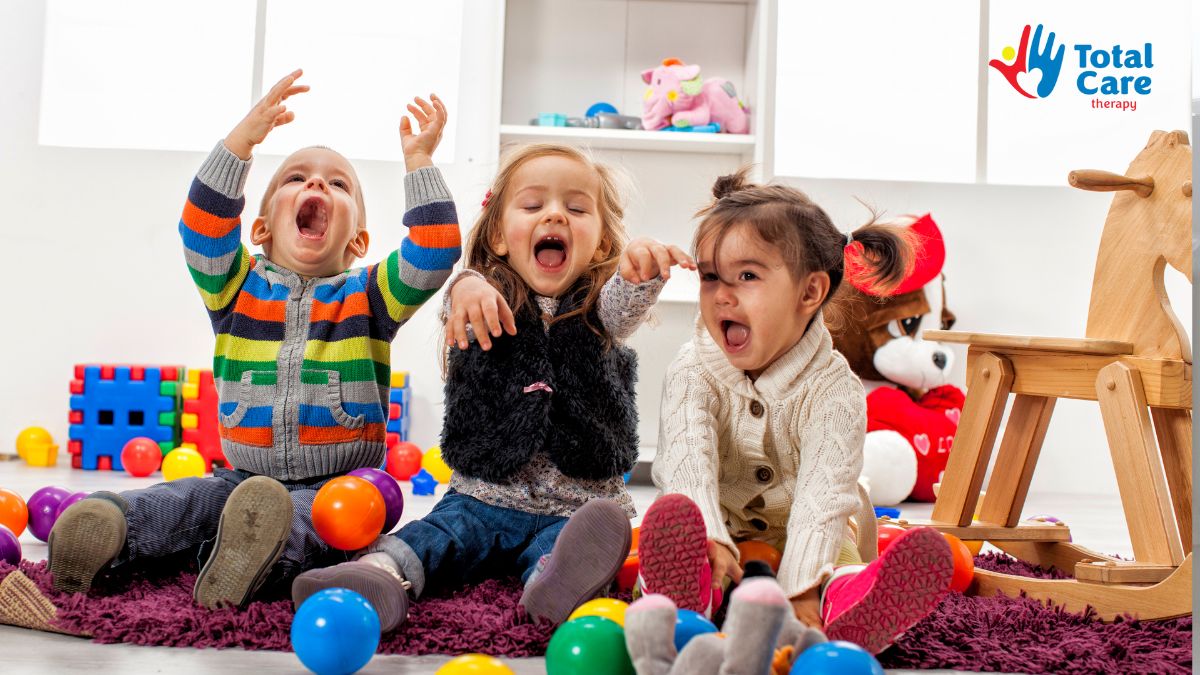Addressing Communication Challenges in Autism
Bridging the Gap: Effective Approaches to Autism Communication Challenges

Understanding the Core of Autism-Related Communication Difficulties
Communication challenges are a hallmark of Autism Spectrum Disorder (ASD), affecting virtually every aspect of social interaction and daily life. These difficulties manifest early and persist into adulthood, requiring tailored strategies and support for effective management. This article explores the nature of these challenges, signs to watch for, and the most promising methods to foster meaningful communication and social engagement across all ages.
The Impact of ASD on Communication in Children and Adults
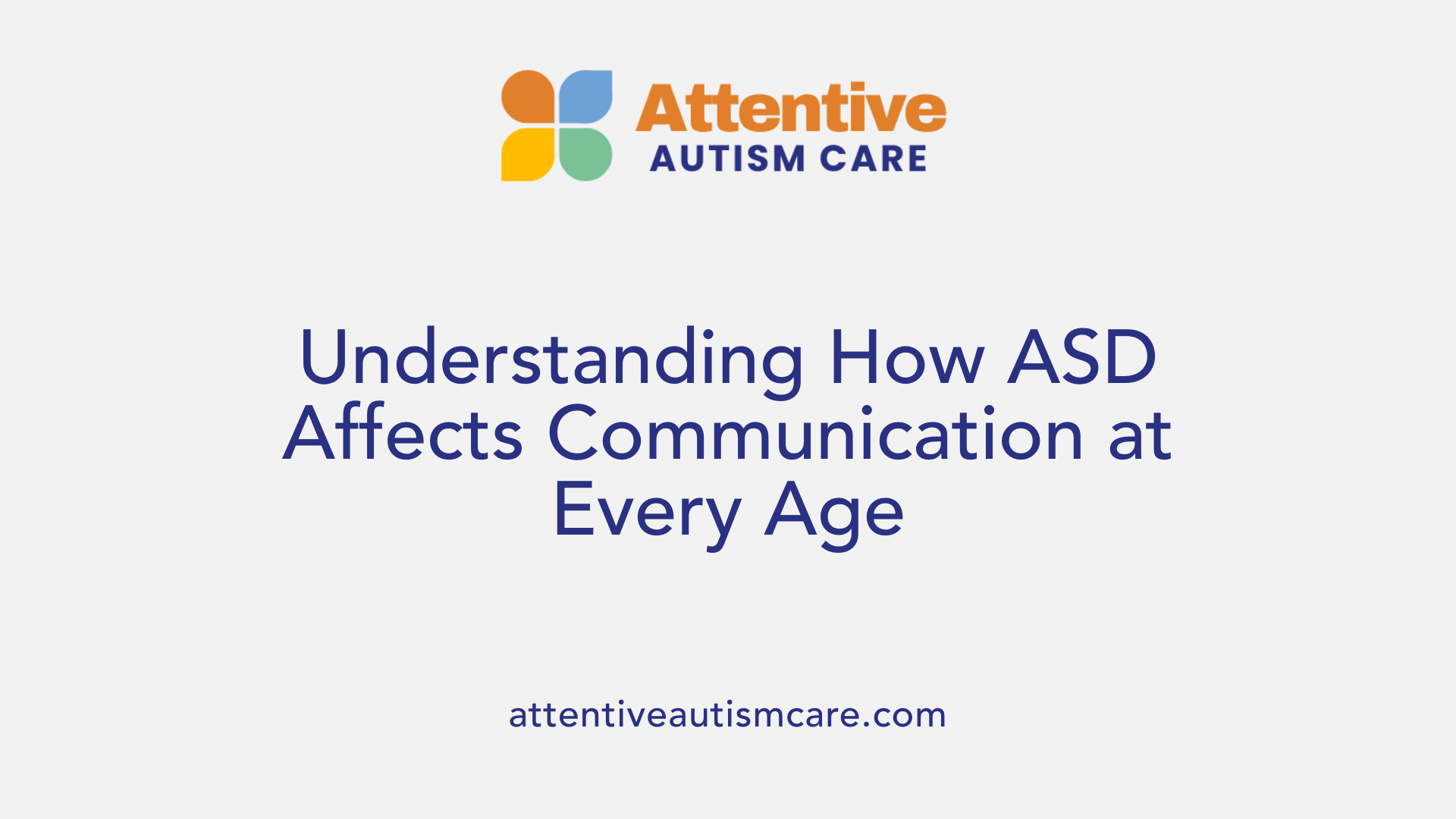
How does autism spectrum disorder affect communication in children and adults?
Autism spectrum disorder (ASD) profoundly influences how individuals communicate, regardless of age. Children and adults with ASD often face challenges in understanding and using both verbal and nonverbal cues, such as gestures, facial expressions, and tone of voice. These difficulties can make social interactions complex and sometimes frustrating.
In children, delays in language development are common. Some may not develop speech at all, while others might use repetitive language, known as echolalia, which they repeat from what they hear. Their language development can be uneven, with some skills emerging early while others lag behind. Nonverbal communication is often affected, with limited eye contact and gestures, complicating social engagement.
For adults, communication challenges persist but also take on different nuances. An adult on the spectrum might interpret language very literally, struggle with understanding sarcasm or humor, and find it hard to read body language or facial expressions. They might prefer written or alternative forms of communication, like sign language, AAC devices, or visual aids.
These ongoing communication difficulties can impact daily life significantly. Individuals might experience social withdrawal, difficulty building friendships or maintaining relationships, and feelings of isolation. Anxiety and mental health issues can stem from misunderstandings and social difficulties. Early intervention, including speech therapy and use of alternative communication methods, can greatly improve outcomes and ease social interactions.
Understanding that communication differences are a core part of ASD helps in developing better support strategies. These include personalized communication approaches, visual supports, and professional therapies like speech-language therapy, all aimed at helping individuals express themselves and connect with others effectively.
Recognizing Signs of Communication Difficulties in ASD

What are common signs of communication difficulties in individuals with autism?
Autism Spectrum Disorder (ASD) often involves specific and recognizable communication challenges that can manifest early in life. One common sign is speaking in repetitive phrases or echolalia, where individuals repeat words or entire sentences, sometimes as a self-soothing or processing behavior.
Children and adults with ASD may show irregular speech patterns, such as speaking in a monotone tone, using overly formal language, or having uneven language development. They might have delays in starting to speak or may not develop speech at all, requiring alternative methods like sign language or visual communication devices.
Nonverbal communication also presents difficulties. Many autistic individuals struggle with understanding or using gestures, facial expressions, and body language—tools fundamental to social interaction. For example, they might avoid eye contact or interpret facial cues literally, making social exchanges challenging.
Reciprocal conversations can be difficult to sustain, with challenges in answering questions appropriately, maintaining topic continuity, or understanding sarcasm and humor. These communication barriers can lead to feelings of frustration, social withdrawal, and misunderstanding in interactions.
Common signs include:
- Limited or unusual speech patterns such as echolalia or repetitive language.
- Difficulty reading or using non-verbal cues like gestures and facial expressions.
- Challenges with eye contact and body language.
- Using alternative communication methods, like sign language or augmentative devices.
- Struggling with converting thoughts into spoken language or understanding figurative speech.
Recognizing these signs early allows for timely intervention, such as speech-language therapy and social skills training, which can significantly improve communication outcomes and social integration.
Therapies and Strategies to Enhance Communication
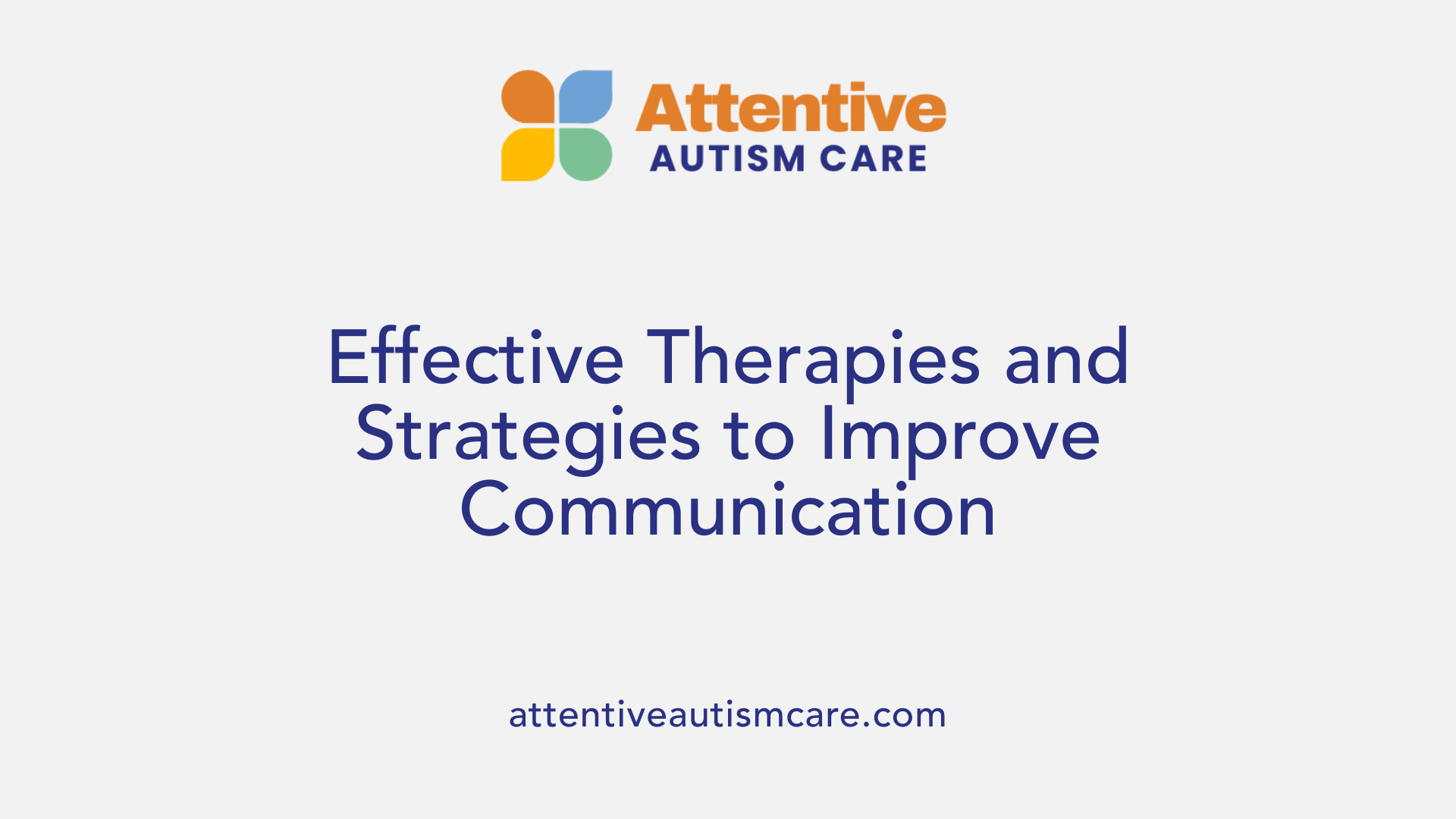 Improving communication skills in individuals with autism involves a variety of therapies and strategies tailored to their unique needs. Speech and language therapy is a cornerstone intervention, focusing on developing both verbal and nonverbal communication abilities. This may include encouraging expressive language, understanding social cues, and interpreting body language.
Improving communication skills in individuals with autism involves a variety of therapies and strategies tailored to their unique needs. Speech and language therapy is a cornerstone intervention, focusing on developing both verbal and nonverbal communication abilities. This may include encouraging expressive language, understanding social cues, and interpreting body language.
Augmentative and alternative communication (AAC) systems are also widely used. These include tools like picture exchange communication systems (PECS), speech-generating devices, and sign language. PECS uses visual images to help children express their needs and has shown to improve communication over time. Speech-generating devices produce spoken language electronically and can be highly effective, though they tend to be costly. Sign language offers quick and detailed communication but can be difficult for some children to learn or physically execute.
Behavioral interventions like applied behavior analysis (ABA) are designed to reinforce positive communication behaviors through structured learning opportunities. Other approaches such as Pivotal Response Training (PRT) and Discrete Trial Teaching focus on teaching fundamental skills that promote spontaneous speech and social interaction.
In addition to structured therapies, naturalistic and developmental strategies play a vital role. Programs like the Early Start Denver Model (ESDM) and TEACCH incorporate communication development into everyday activities and use visual supports like schedules and social stories to foster understanding and reduce anxiety.
Support from parents and caregivers is crucial. Their involvement includes practicing communication techniques at home, fostering patience, and celebrating small successes to motivate continued progress.
Moreover, combining different approaches often yields the best results. Integrating structured behavioral techniques with naturalistic methods, video modeling, and environmental adjustments promotes the generalization of communication skills and encourages spontaneous use.
While these interventions are generally beneficial, the evidence base varies, and ongoing research continues to refine best practices. Customizing strategies to each individual’s strengths, interests, and challenges increases the likelihood of meaningful communication improvements.
Assessment and Personalization of Communication Interventions

How can communication challenges in autism be assessed and addressed through intervention?
Assessing communication difficulties in individuals with autism requires a thorough and multidisciplinary approach. Professionals such as speech-language pathologists, psychologists, paediatricians, and educators collaborate to evaluate both verbal and nonverbal skills.
Standardized assessment tools, like the Autism Diagnostic Observation Schedule (ADOS) and the Vineland Adaptive Behavior Scales, are commonly used to gauge communication levels, social interaction, and daily living skills. Observation in natural settings helps clinicians understand how the individual communicates in real-world situations.
For children with limited speech, language sampling provides detailed insights into their expressive and receptive language capabilities. This information guides the development of tailored interventions.
Since autism’s presentation varies widely, assessment strategies also include evaluating alternative communication methods such as Augmentative and Alternative Communication (AAC) devices, sign language, or picture-based systems like PECS. These tools can significantly support individuals with limited verbal ability.
Effective intervention relies on individualized plans that consider the person’s unique strengths, challenges, and cultural background. Speech therapy often aims to enhance functional communication skills, while social skills training promotes better understanding of social cues.
Ongoing research emphasizes creating more adaptable and reliable assessment techniques that can accurately capture diverse communication profiles over time. These improvements help ensure interventions remain effective throughout different life stages.
In conclusion, a comprehensive, personalized approach to assessment informs targeted therapies that improve communication abilities and quality of life for those with autism.
Addressing Social Difficulties and Enhancing Social Skills
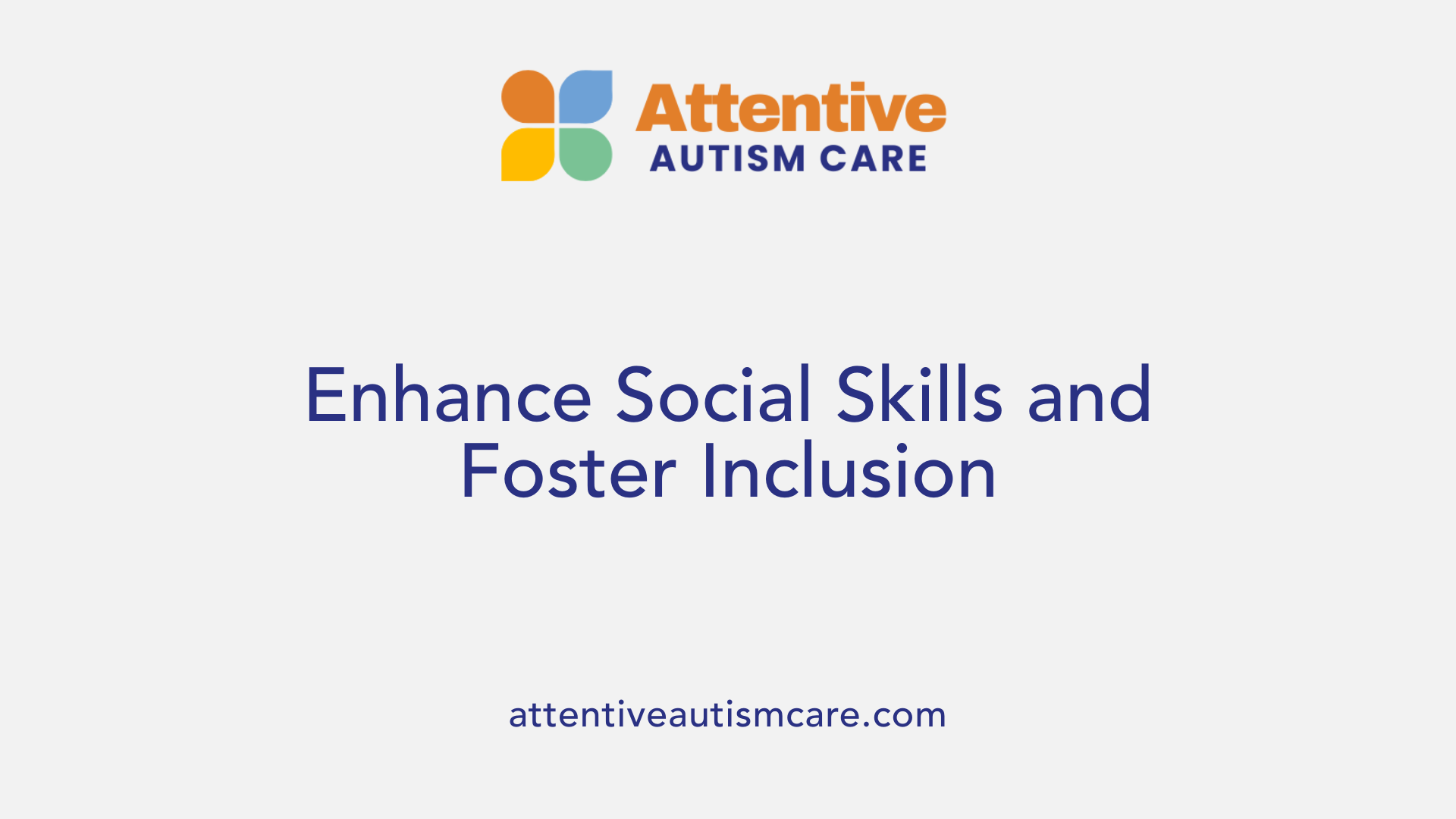
What methods can help address social difficulties and enhance social communication skills in autistic individuals?
Autistic individuals often face challenges in social communication, including interpreting body language, understanding social cues, and engaging in peer interactions. To support social development, several effective strategies have been developed.
One prominent approach is social skills training through structured programs. For example, the PEERS (Program for the Education and Enrichment of Relational Skills) curriculum offers group-based sessions that provide practice in real-life social situations. These sessions focus on teaching cooperation, empathy, understanding social rules, and managing friendships, which are crucial for social integration.
Visual supports are also vital tools. Communication boards, the Picture Exchange Communication System (PECS), sign language, and electronic communication devices help individuals who are nonverbal or have limited speech to express their needs and participate socially. These tools reduce frustration and facilitate clearer understanding within social interactions.
In addition, peer-mediated interventions involve training classmates or peers to interact positively and supportively with autistic individuals. This approach helps foster inclusive social environments where autistic individuals can practice social skills naturally.
Creating inclusive environments is essential. Community involvement through social narratives and social stories provides context and prepares autistic individuals for new or challenging social situations. Such tailored programs take individual preferences and needs into account, ensuring interventions are relevant and engaging.
Combining these methods—structured social skills training, visual aids, peer support, and inclusive community programs—can significantly improve social communication in autistic individuals. Engaging qualified professionals to guide and personalize these strategies ensures more successful social development and helps foster meaningful peer relationships.
Long-Term Outcomes and Lifelong Support
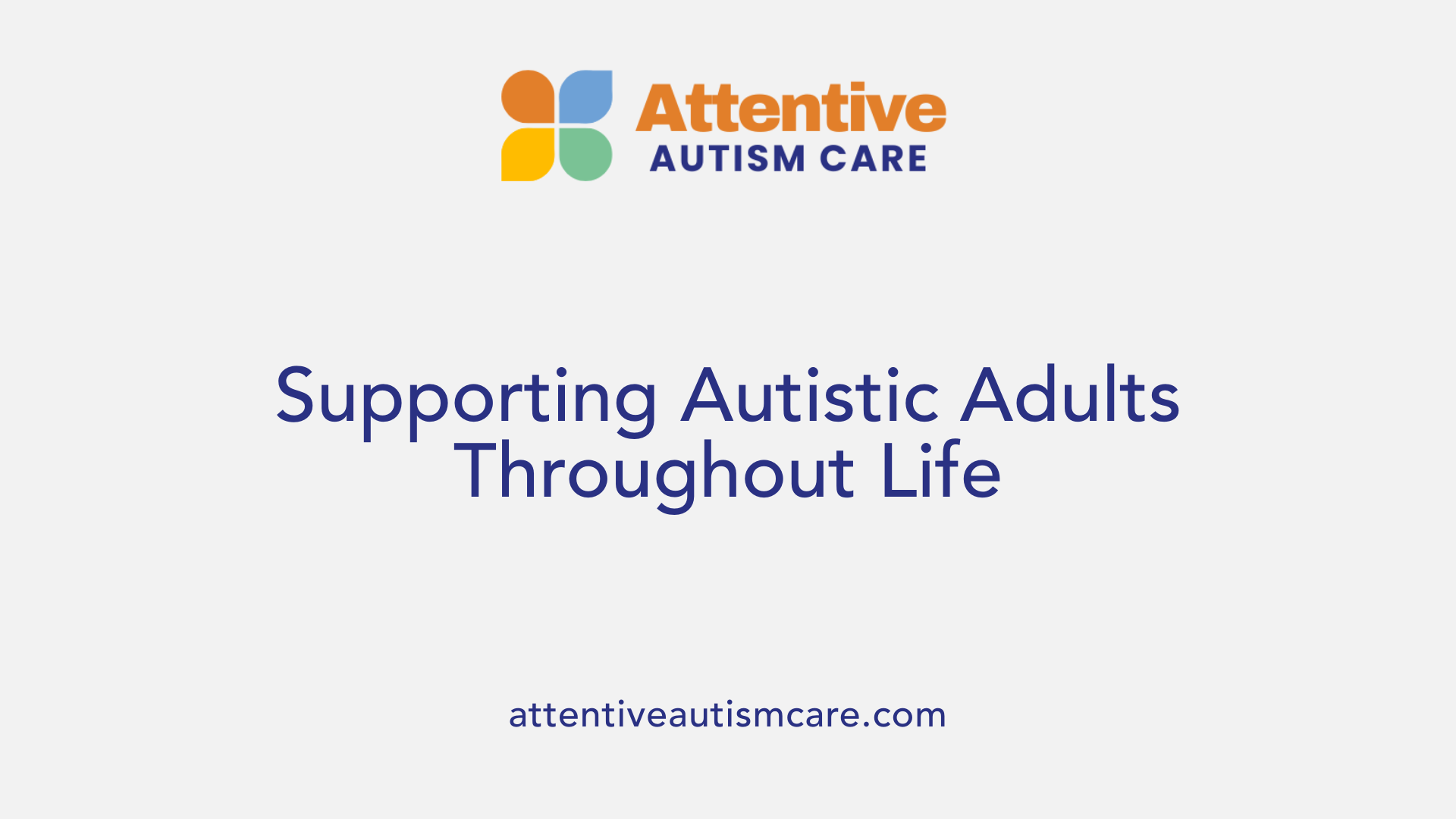
How does autism spectrum disorder affect communication in adulthood?
Autistic adults often continue to face various communication challenges that impact their daily lives and social integration. They may struggle with interpreting abstract language, sarcasm, humor, and idiomatic expressions, which can lead to misunderstandings. Understanding body language and facial expressions is frequently difficult, affecting social cues and interactions.
Sensory overload is common, sometimes hindering auditory processing and making language comprehension taxing. Many autistic adults interpret language very literally, which can be confusing during conversations involving figurative speech or humor. Repetitive speech patterns, such as echolalia, may persist and serve various functions, including self-soothing or processing information.
Despite these hurdles, many autistic adults have notable strengths. These include honesty, a keen attention to detail, creative thinking, and strong skills in technical or visual areas. Tailored support programs, community involvement, and understanding environments are essential for fostering social inclusion and enhancing employment prospects.
Ongoing support might involve speech therapy, social skills training, and workplace accommodations to help autistic adults communicate effectively and participate fully in society. Recognizing communication differences as lifelong traits highlights the importance of consistent, adaptive strategies to support a fulfilling and independent life.
The Path Forward: Embracing Diversity in Autism Communication
Effective management of communication challenges in autism hinges on early diagnosis, personalized therapy, community awareness, and inclusive practices. Recognizing the diverse communication profiles within autism enables caregivers, clinicians, and peers to foster environments where autistic individuals can thrive socially and professionally. Continued research and innovation in assessment, intervention, and support serve as cornerstones for empowering those on the spectrum to achieve their fullest potential and lead fulfilling lives.
References
- Autism Spectrum Disorder: Communication Problems ... - NIDCD
- Autism and communication
- Understanding communication difficulties in autism | KU SOE
- Understanding Autism and Communication Difficulties in ...
- Autism and Communication Challenges
- Communication Challenges in Autism Spectrum Disorder (ASD)
- 7 Autism Behavior and Communication Strategies | NU
- Autism Spectrum Disorder: Communication Problems ... - NIDCD
































































